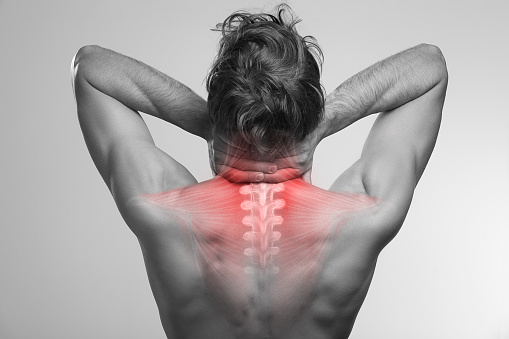How do I know if I have a pinched nerve in my back?
A pinched nerve is a definition used by back pain sufferers, and even some practitioners as a causative factor in what is causing back pain.
The fact of the matter is, if you have a pinched nerve - you would be in excruciating pain to the point of hospitalization and at the risk of permanent damage. The most common course of action is immediate surgery to relieve the nerve entrapment, to prevent permanent damage to the nerve and to alleviate the extreme pain.
Yes, it can and does happen, however it occurs in a very small amount of people that suffer chronic back pain and even in acute back pain sufferers (normally due to a dramatic event) The vast majority of people with back pain refer to having a pinched nerve or were told by a practitioner that they have a pinched nerve.
There is nothing wrong with this assessment, however if it is removing the focus away from the true source and cause of the lower back pain then it becomes an issue and we find this is often the case. People spend a lot of time and money getting scans, reports, specialist opinions on their ‘pinched nerve’ when in reality the cause of their back pain can be as simple as muscular imbalances that are placing excessive load on the structures of the lower back, in turn causing pain which in cases in completely reversible with a qualified physical therapist.
Lower back and hip complaints often refer pain down the leg and into the buttock region which gives people the impression or sensation that they have a pinched nerve. In the majority of cases the referred pain is muscular related, however in cases such as sciatica pain there can actually be an interference with the nerve.
If the space in which a nerve has to function is compromised, distorted sensations can be present at the areas in which the nerve innervates. Inflammation present to an area can impact the nerves that branch out from the lumbar spine. Tight and restricted muscles deep in the buttock can interfere with the space in which the sciatic nerve descends through the region.
Most often in the event of chronic lower back pain, poor postural strength results in a hyperlordotic lumbar curve. Weak gluteal muscle can cause the pelvis to tilt forward, in turn creating a more excessive curve on the lower back (hyper lordosis). This excessive curve causes a jamming effect on the joints, muscles, and fascia of the lower back. As the back-pain sufferers posture weakens more and more over time, the area becomes even more jammed due the lack of support. Inflammation, muscular and joint tension and even the jamming itself all can play a role in impacting the nerves that branch out from the lumbosacral region.
Whilst there is no direct pinching of the nerve, there is an impact to the nerve which causes pain. It is important to note that this is a side effect of poor posture resulting from muscular imbalances. In order to eradicate the chronic condition altogether, one must focus on the root cause of the pain, not just the symptoms (impacted lumbosacral structures - including the nerves).
Back Solution across America has a proven record with acute and chronic back pain sufferers exceeding in excellence across the country. We have treated thousands of patients that range from Olympic athletes, professional athletes as well as everyday pain sufferers. Our rapid growth across the country will ensure a local clinic will be in your area soon to address you acute and chronic back pain.

